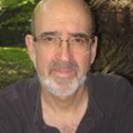
Andrew B. Lassar, Ph.D.
Current work in the Lassar Lab focuses on the transcriptional regulatory pathways that regulate chondrocyte formation and maturation, elucidation of how mechanical loading regulates gene expression in the joint, a molecular dissection of the signals and transcription factors that maintain articular cartilage stem cells, and the development of a gene therapy model to treat osteoarthritis.
Andrew Lassar received his B. A. from Yale (’75) and his Ph.D. (’83) from Washington University in St. Louis, where he worked with Bob Roeder. He then performed his postdoctoral work in the laboratory of Hal Weintraub at the Fred Hutchinson Cancer Research Center in Seattle, WA. In 1991, he established his own lab in the Department of Biological Chemistry and Molecular Pharmacology at Harvard Medical School, where he runs a research lab and teaches developmental biology.
Research:
The overarching goal of the Lassar lab is to understand how different cells types (i.e., articular or epiphyseal chondrocytes, ligaments and synoviocytes) emerge from a common precursor population during the formation of the synovial joint. Towards this goal, work in the Lassar lab focuses on the transcriptional regulatory pathways that regulate chondrocyte formation and maturation, elucidation of how mechanical loading regulates gene expression in the joint, and a molecular dissection of the signals and transcription factors that maintain articular cartilage stem cells. We are studying how the initial cartilage template is induced in the embryo and are trying to elucidate how chondrocytes “decide” whether to undergo maturation, which leads to endochondral ossification, or remain immature, as in the articular cartilage of our joints. The Lassar lab identified a stem cell population for articular cartilage; and we are employing genome-wide ATAC-Seq, Cut&Run-Seq, and RNA-Seq methodologies to elucidate the transcriptional regulators that control both the induction and maintenance of these stem cells.
Identification of factors that are necessary for Sox9 to activate the chondrogenic differentiation program. The transcription factor Sox9 is critical for mesenchymal cells to commit to and execute the chondrogenic differentiation program; in its absence chondrogenesis is blocked. Sox9 both directly activates chondrocyte differentiation markers and induces the expression of Sox5 and Sox6, which work together with Sox9 to activate the chondrocyte differentiation program. However, in addition to its essential role in initiating the chondrogenic differentiation program, Sox9 is also expressed in a number of other cells types, including neural stem cells, oligodendrocyte precursors, intestinal stem cells, hair follicle stem cells, and the developing testis. Taken together, these findings indicate that the ability of Sox9 to induce the chondrocyte differentiation program is context dependent, suggesting that additional factors are necessary for Sox9 to activate chondrocyte-specific transcriptional targets. We have recently identified additional chondrogenic competence factors; and are studying how these factors establish the competence for Sox9 to induce chondrocyte formation.
Identification of a transcriptional network that controls the formation and maintenance of articular cartilage stem cells. Lineage tracing studies have suggested that growth plate and articular chondrocytes arise from distinct progenitor populations, such that articular chondrocytes share a common origin with synovial cells that line the joint cavity. The superficial-most layer of articular cartilage is distinguished from deeper layers by expression of lubricin, which is encoded by the Prg4 locus. Prior work by the Lassar lab and others indicated that Prg4-expressing cells in embryonic and early post-natal joints constitute a progenitor pool for all regions of the articular cartilage in the adult. Recently, we identified Creb5 as a transcription factor that is specifically expressed in superficial zone articular chondrocytes and is required for TGF-b and EGFR signaling to induce Prg4 expression. Notably, forced expression of Creb5 in chondrocytes derived from the deep zone of the articular cartilage confers the competence for TGF-b and EGFR signals to induce Prg4 expression. Chromatin-IP and ATAC-Seq analyses have revealed that Creb5 directly binds to two Prg4 promoter-proximal regulatory elements, that display an open chromatin conformation specifically in superficial zone articular chondrocytes; and which work in combination with a more distal regulatory element to drive induction of Prg4 by TGF-b. By engineering mice that either lack Creb5 function, or mis-express this transcription factor in the developing limb bud mesenchyme, we have found that Creb5 is necessary to initiate the expression of signaling molecules that both direct the formation of synovial joints and guide perichondrial tissue to form articular cartilage instead of bone. In addition, we have found that Creb5 function is critical to maintain the articular cartilage stem cell population in postnatal mice. We are currently determining both what signals regulate Creb5 expression and elucidating how Creb5 works with other transcriptional regulators to regulate both the formation and maintenance of articular cartilage stem cells; with the goal of employing this knowledge to restore articular cartilage stem cells in degenerating joint tissue.
Address:
Room SGM 302A
240 Longwood Avenue
Boston, MA 02115
Development
View full abstract on Pubmed
Genes Dev
View full abstract on Pubmed
Cold Spring Harb Symp Quant Biol
View full abstract on Pubmed
Development
View full abstract on Pubmed
Dev Biol
View full abstract on Pubmed